The history of our jewels
We delve into the collection of the Naturgy Foundation and recover one of its precious jewels that transports us to a past time.
La dignidad de un pollo (A chicken’s dignity)
La dignidad de un pollo (A chicken’s dignity) is the title of this advert, which was broadcast for the first time in 1929 and was created by the film studio Emérita Films for Catalana de Gas y Electricidad (currently Naturgy).
Past items
- William Murdock
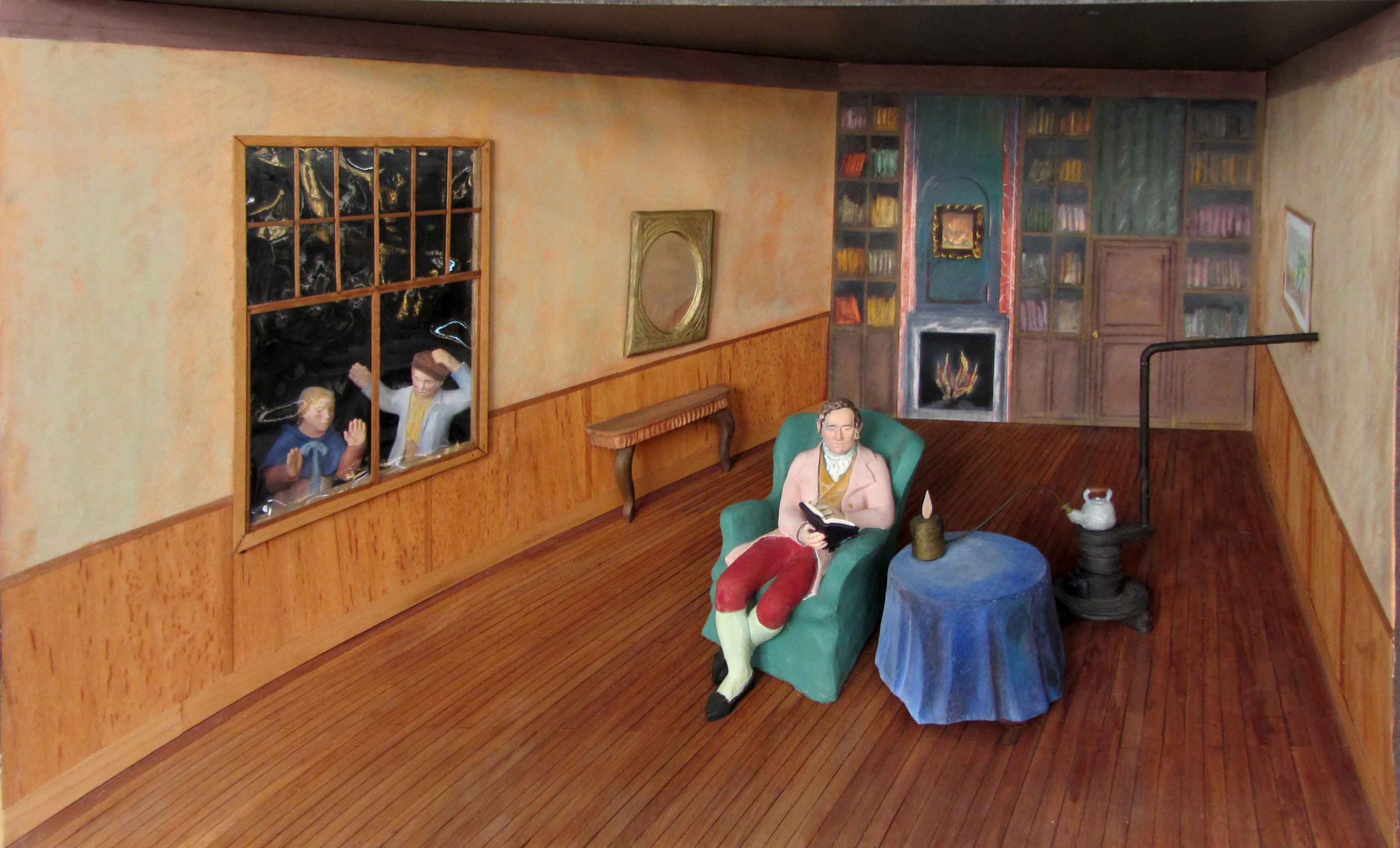 Find out more
Find out moreThis piece, which is part of the Naturgy Foundation’s collection, is a diorama that depicts the first experiment using gas to light homes.
- DPA 1041 field telephone
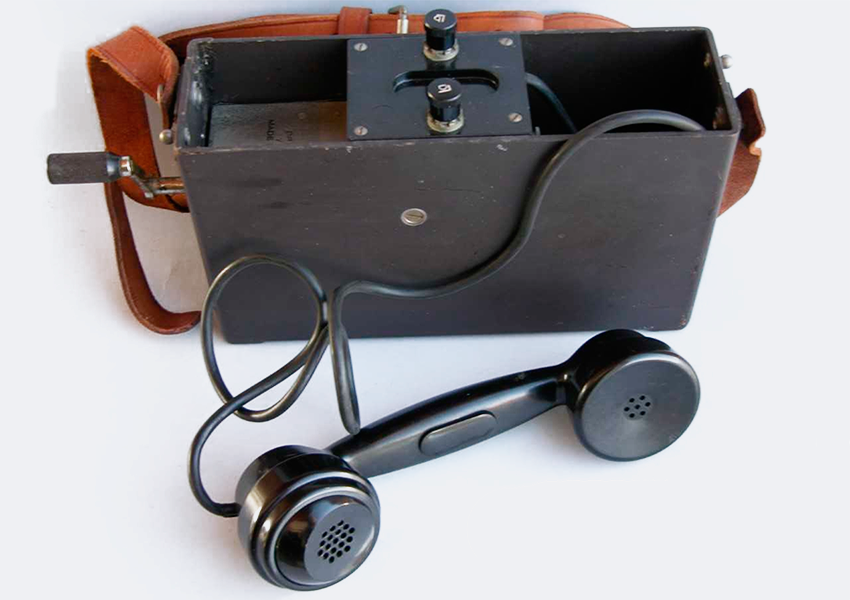 Find out more
Find out moreThis item forms part of the fund of electrical elements and material from the Naturgy Foundation collection, which was incorporated following the merging of Gas Natural and Unión Fenosa in 2011. It is a portable telephone, also called a field telephone as it was mainly designed to replace telegraphs in wartime communications and to coordinate military movements.
- Curling iron
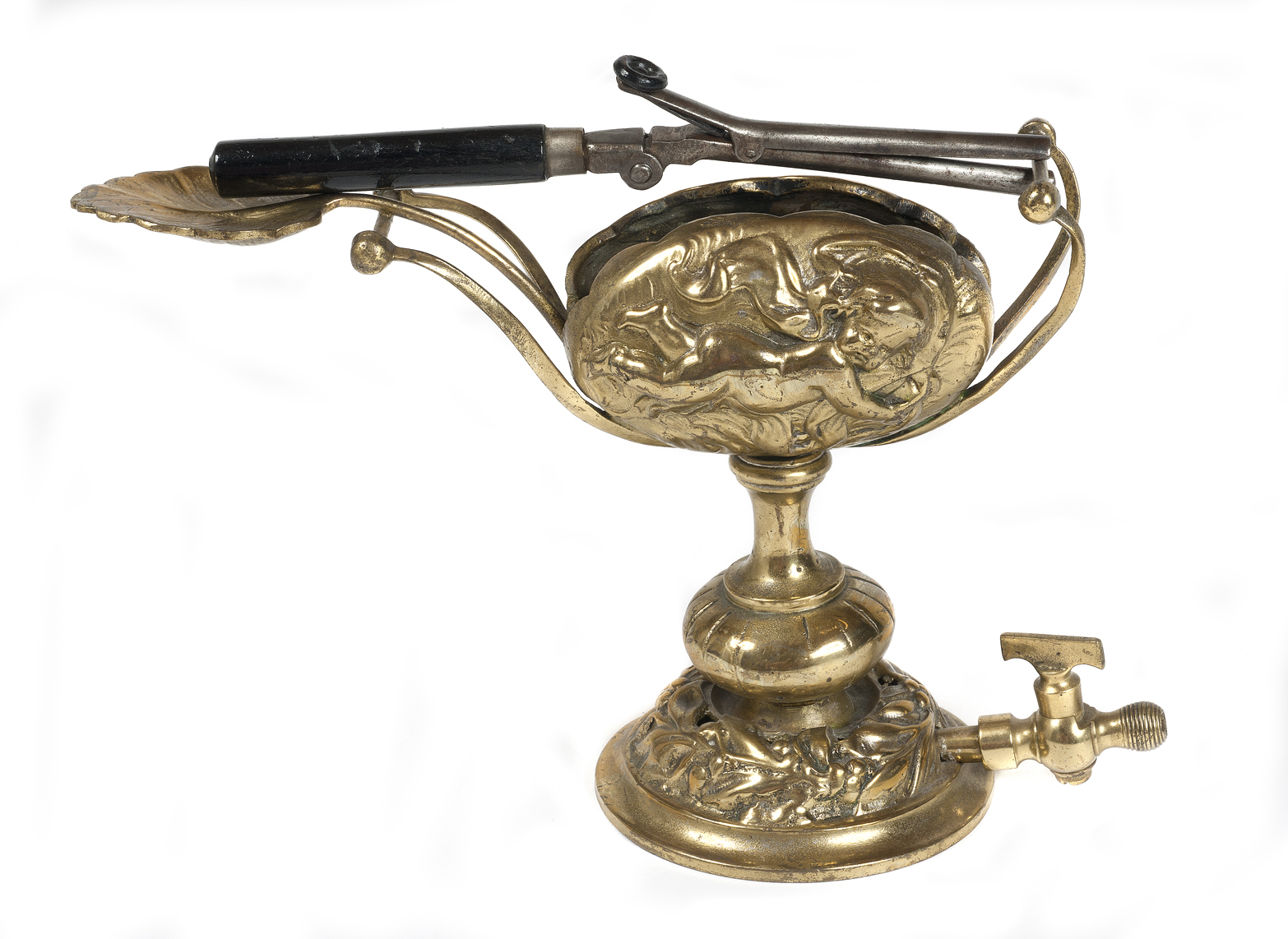 Find out more
Find out moreThe fund of the Naturgy Foundation protects iconic gas appliances such as this hair curling tool. It is ingenious in two parts: on the one hand, the base that has a permanent flame thanks to gas, and on the other hand, the pegs or tongs that curl the hair to give it the desired effect. This tool became very popular in bourgeois households in Paris in the early 20th century, the period when the art nouveau movement emerged.
- Double measuring device
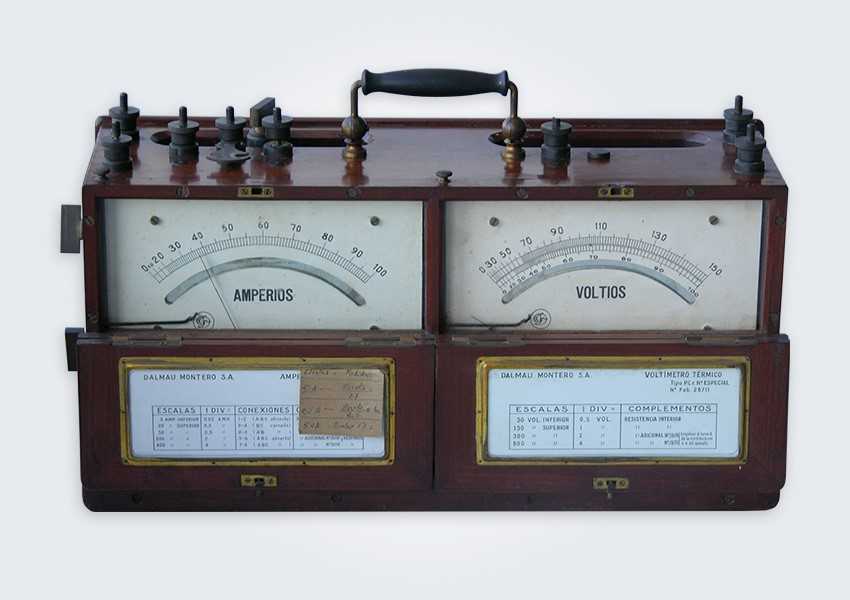 Find out more
Find out moreFrom the second decade of the 20th century, electricity was converted into a first-rate energy source and its growth was unstoppable, decisively affecting the mechanisation of the growing industry and featuring prominently in public street lighting in cities. This item preserved in the Gas Natural Fenosa Foundation Gas Museum collection is a multiple measuring device formed by an ammeter and a voltmeter.
- The articles of association of the company Sociedad Catalana para el Alumbrado por Gas
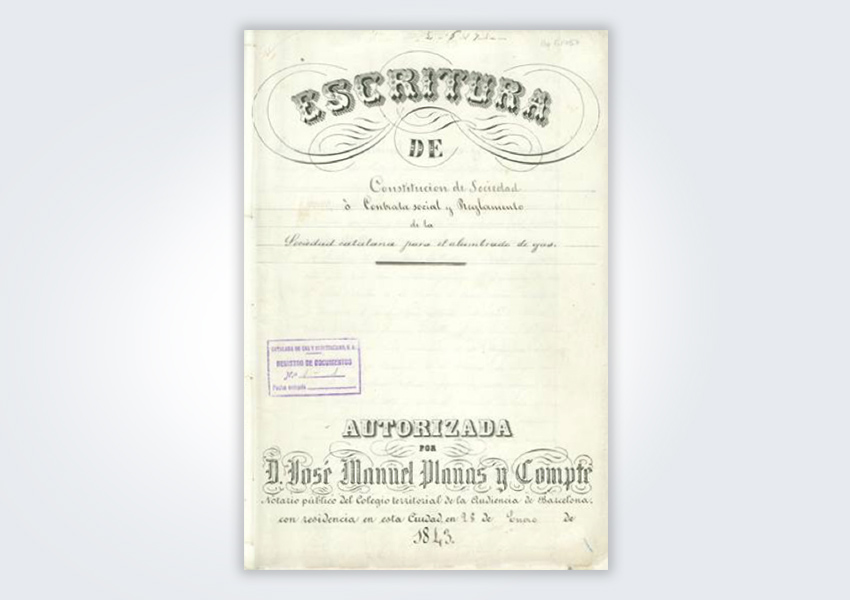 Find out more
Find out moreThe articles of association of the company Sociedad Catalana para el Alumbrado por Gas, the company that gave rise to the current Gas Natural Fenosa, is one of the jewels in the Gas Natural Fenosa Foundation historical archive. In 1841, the Barcelona Council granted the city’s gas street lighting to French industrialist Charles Lebon after a tender process. Gas technology was already in operation in London and Paris and as a result of using this energy, these European cities led a stark social transformation.
- Philishave Electric Shaver
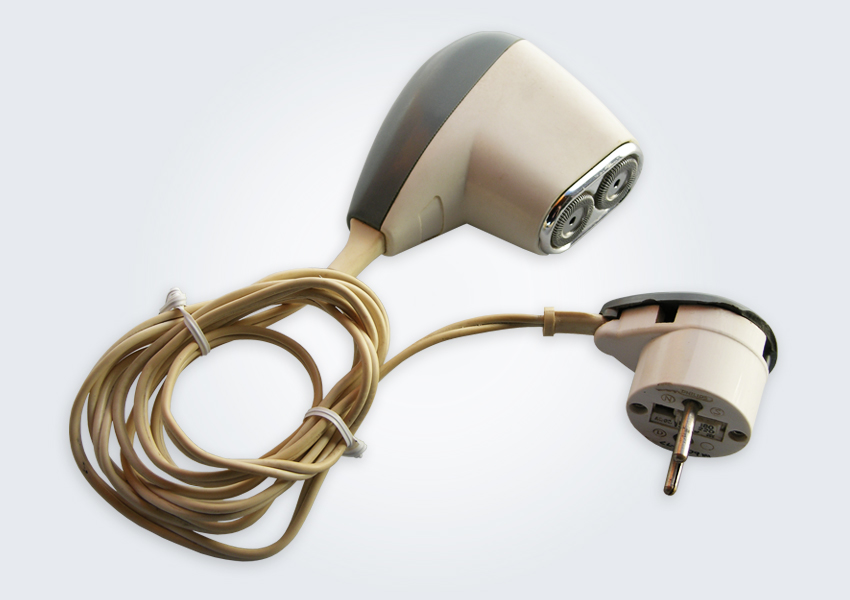 Find out more
Find out moreThe item from the Gas Museum collection that we present today is one of the most popular electric shaving machines from the 1960s, the Philishave. This item does not form part of the original Catalana de Gas collection and was recently added to the museum collection alongside other noticeable items from the electricitysector that complete the selection of objects that are preserved.
- Gas stove Le Standard I
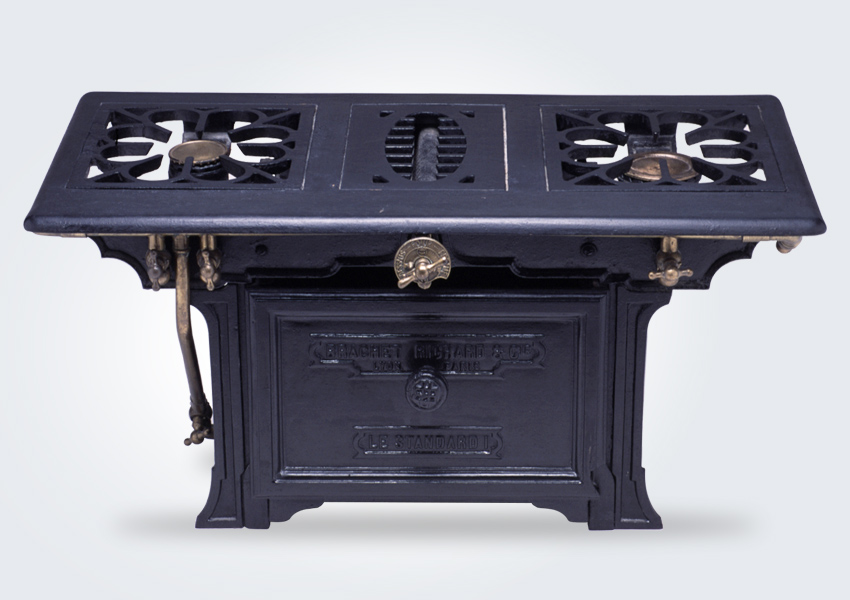 Find out more
Find out moreThe model Standard I, which is preserved in the Gas Appliances Collection at the Gas Natural Fenosa Foundation Gas Museum, was manufactured by Brachet et Richard in 1879.
- Gas oven ``Le Cornue``. Rôtisseuse / Pâtissière
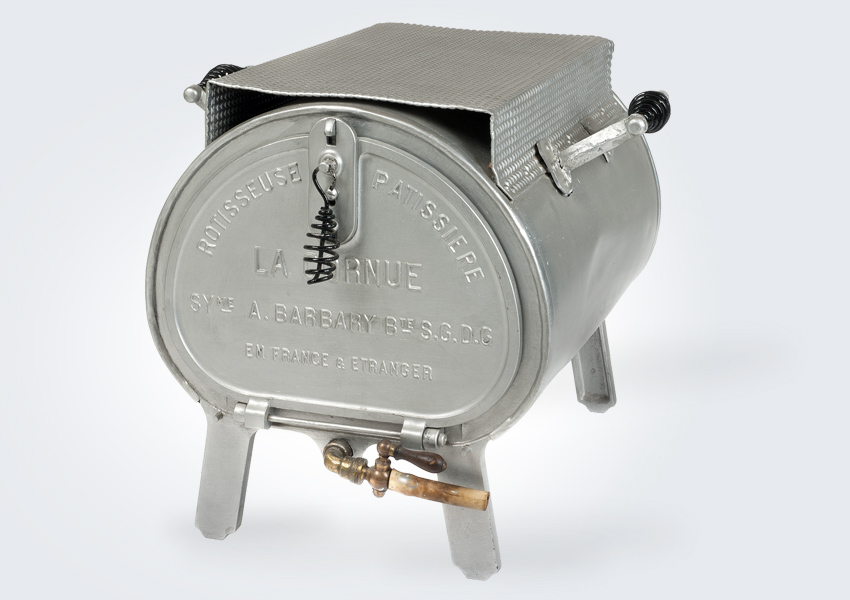 Find out more
Find out moreThe history of cooking is closely related to the technological evolution of food cooking equipment.The “Le Cornue” oven, which was invented and patented by Frenchman Albert Dupuy, was a true revolution in the cooking market.
- Commemorative chest of the centenary of Catalan Gas and Electricity, S.A.
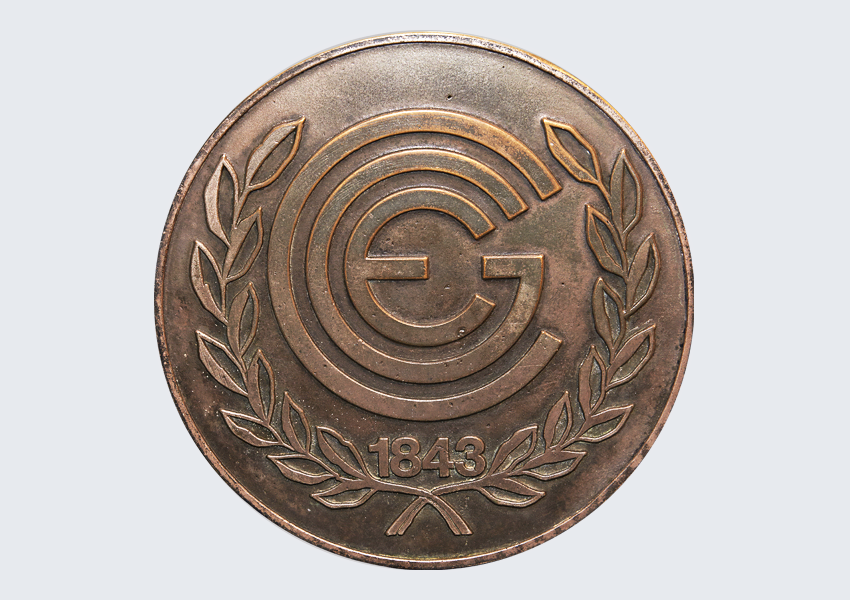 Find out more
Find out moreA large number of similar objects are preserved among the original items in the collection. This one was chosen over all the others to celebrate the centenary of the creation of the company in 1843.
- Vectrix VX1 electric motorcycle
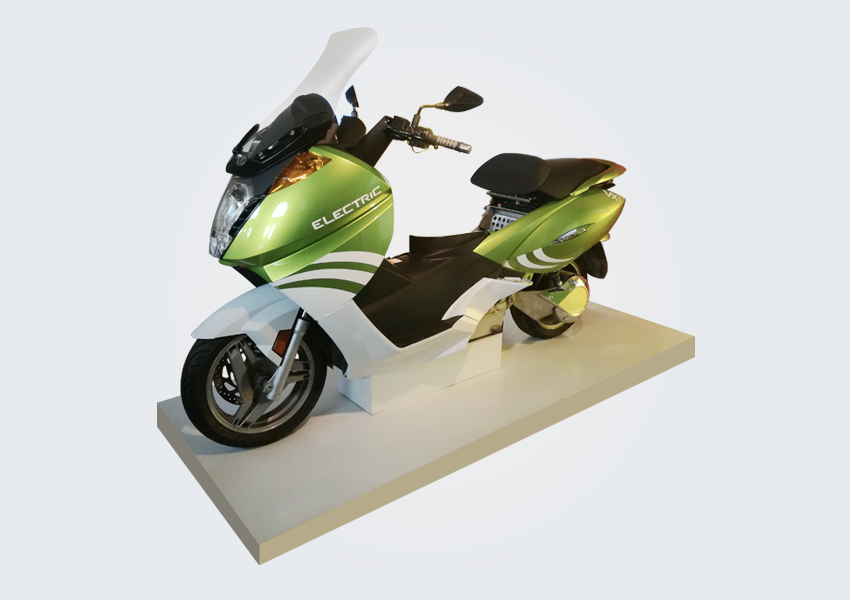 Find out more
Find out moreThe “Energy of the future” section at the Gas Natural Fenosa Foundation Gas Museum presents an example of the Vectrix VX1 scooter, a motorcycle that works with electric batteries. In the electric motor sector in Spain, these vehicles were pioneers in using new energy models in transport.
- Parabolic heat
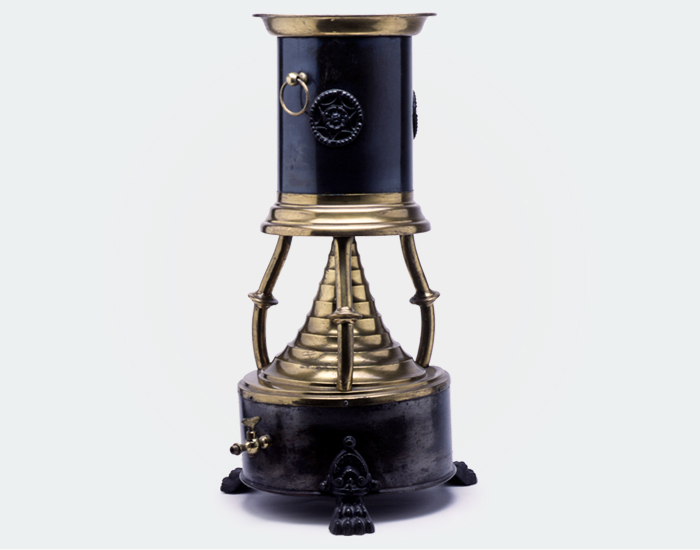 Find out more
Find out moreThis item, which is preserved in the Gas Natural Fenosa Foundation Gas Museum collection, is a heater and its function was to heat a room by gas combustion. Several models evolved from this piece of equipment. The first heaters were closed and did not have a system to remove the combustion gases.
- Model of gasometer M. A. N.
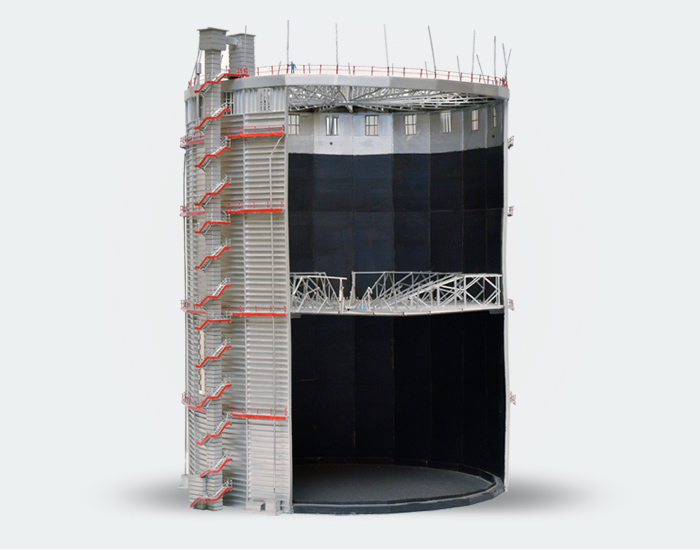 Find out more
Find out moreThis item from the Gas Natural Fenosa Foundation Gas Museum collection is a model of the gasometer installed in the Sant Martí de Provençals (Barcelona) gas factory, which was put in operation on 16 January 1940. Colloquially, the gasometer was known as the M.A.N. because these initials correspond to the German company employed to install them, Maschinenfabrik Augsburg-Nürnberg, A. G.
- Timer clock ``Le réveil magique``
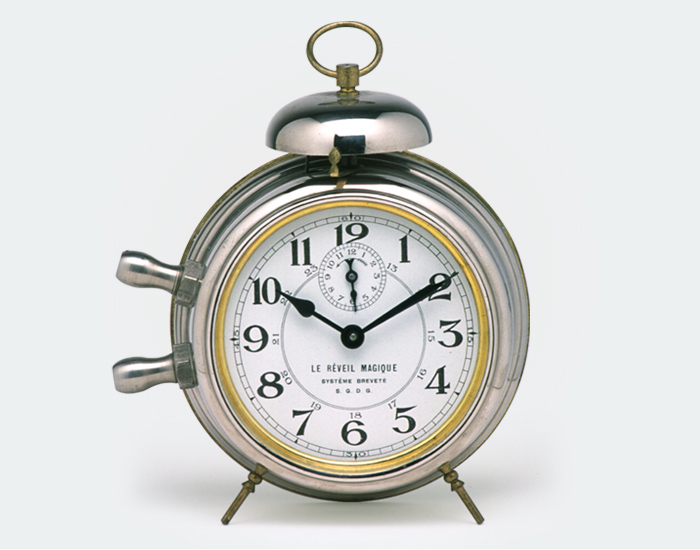 Find out more
Find out moreThe “Le Réveil Magique”, timer, which is preserved in the Gas Natural Fenosa Foundation Gas Museum collection, is an invention that helped automate when the gas lampposts in cities were turned off and on at the start of the 20th century. Before using this gas appliance, the lighting and extinguishing task was assigned to the lamplighters.
- Gas autoclave
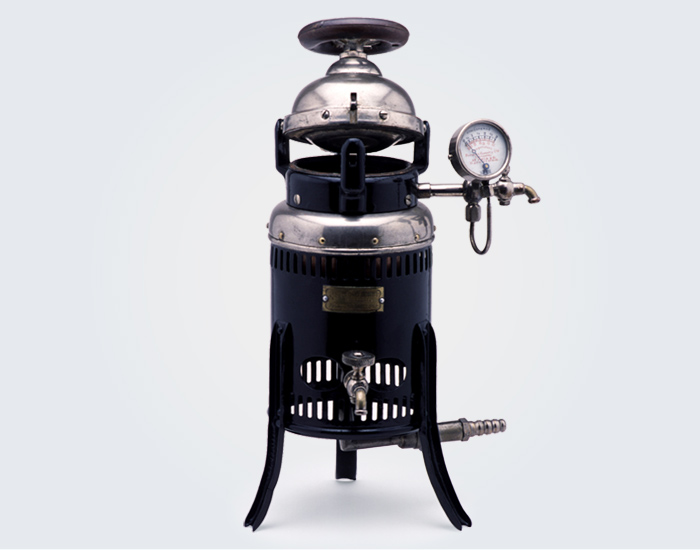 Find out more
Find out moreThe Gas Natural Fenosa Foundation Gas Museum collection preserves a gas autoclave that shows the progress in the medical sector. It is an invention that served to sterilise sanitary material using water vapour. This item is the smallest of its kind and because of its size, it is believed to have been used to sterilise surgical material, possibly needles and other small sanitary products.
- Hydraulic type demonstration counter
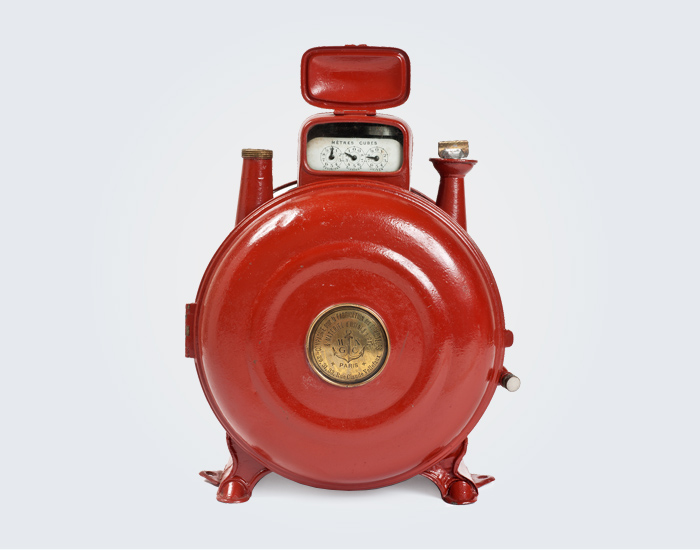 Find out more
Find out moreWhen gas reached homes in the early 20th century, devices were created to measure the gas consumption of the subscribers. Manufacturers created demonstration units such as this one, which has been preserved in the Gas Natural Fenosa Foundation Gas Museum. This type of unit was used in shops and homes to check how efficient and accurate energy consumption was. The device shown in this article was the hydraulic sort and was manufactured in Paris by the Compagnie pour la Fabrication des Compteurs et Matériel d’Usines à Gaz, one of the most important companies in the gas sector of France at the time.
- Gas hat moulder
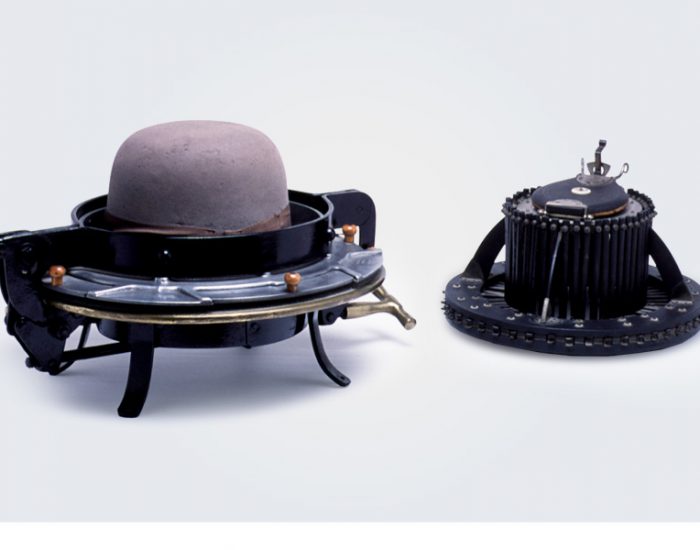 Find out more
Find out moreThe gas hat moulder, which is preserved in the Gas Natural Fenosa Foundation Gas Museum collection, was manufactured by H. Maillard in Paris at the end of the 19th century. This item, a witness to the modernisation of the hat industry, enabled the manufacturing of different styles of accessory, which revolutionised the history of fashion and clothes. This particular invention, which still has its patent number embossed on the upper part, perfected the handmade craft of manufacturing hats.
- The Cantilever
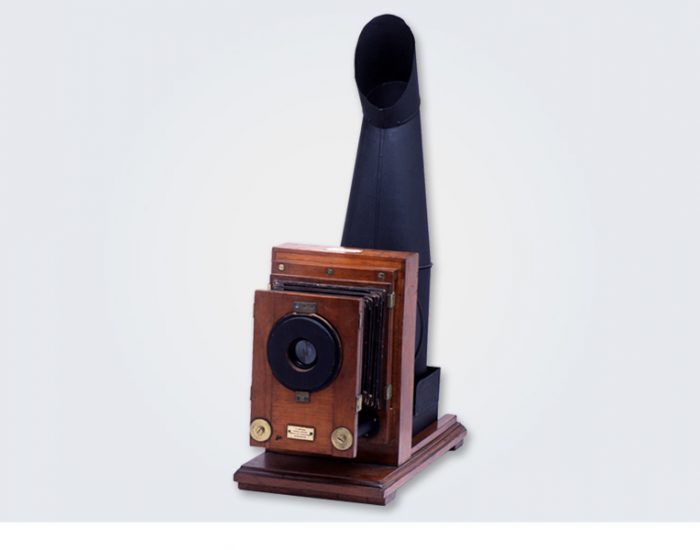 Find out more
Find out moreThe Cantilever was a device for enlarging photos designed and manufactured by inventor William Hume in Edinburgh, in 1890. This gas appliance, which is preserved in the Gas Natural Fenosa Foundation Gas Museum collection, enabled images to be enlarged to project them onto a surface or to print them on photography paper. It was used in the fields of photography, art, design, architecture and engineering, among others.
- Percolator. Coffee maker for the hotel industry
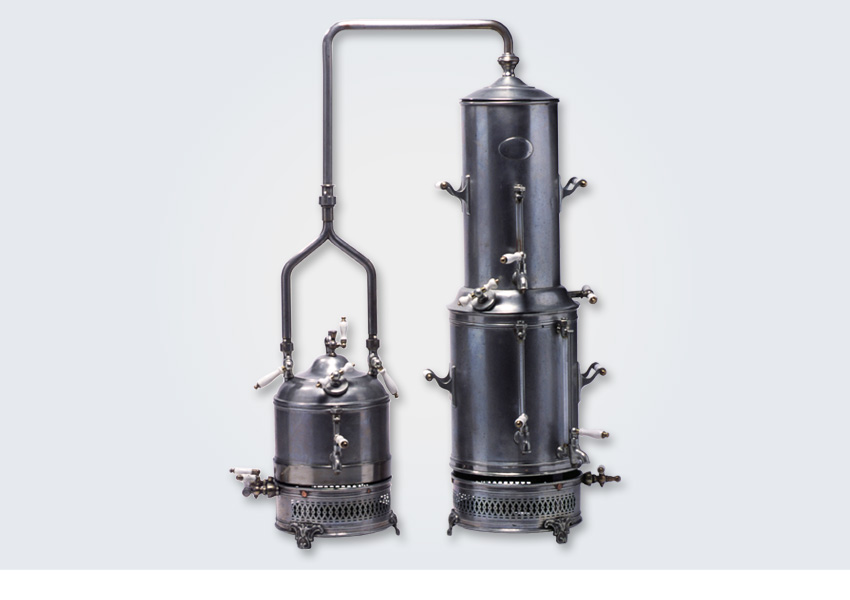 Find out more
Find out moreThe coffee percolator is a gas appliance from the early 20th century that was manufactured for use in hotels in the French city of Avignon. The recipient on the left of this coffee maker contained water that was heated by the lower parts using an intense gas flame.
- Corberó number III stove
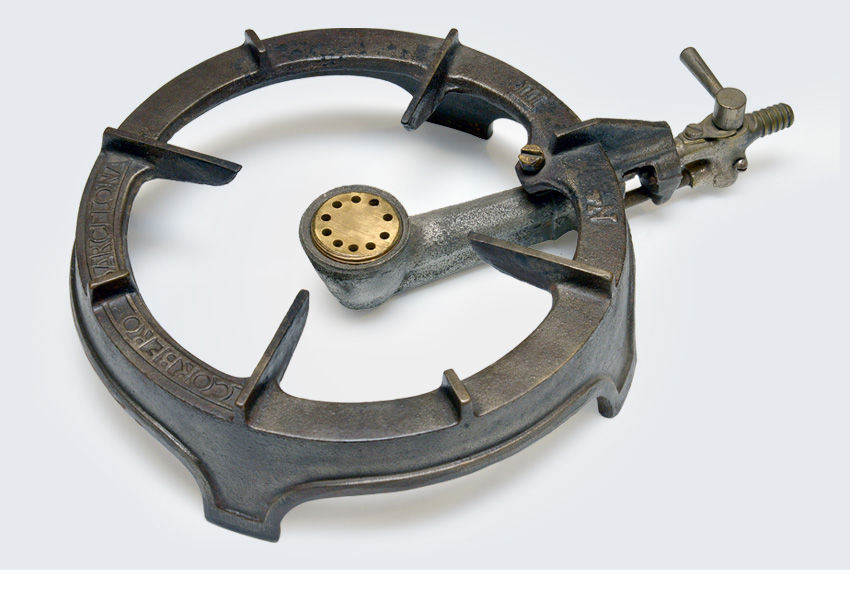 Find out more
Find out moreCooker manufactured by the company Corberó in 1930. An object like this, which was used to for cooking or heating in a faster, more secure way, was easily introduced in homes because of its very affordable price.
- Water heater
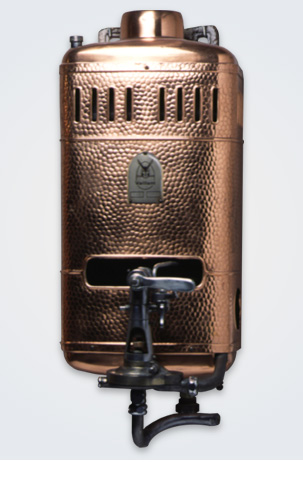 Find out more
Find out moreIn the mid-19th century, gas started to be used to heat water for health uses. At the start, water heaters used combustion gas in a burner.
- Nut toaster
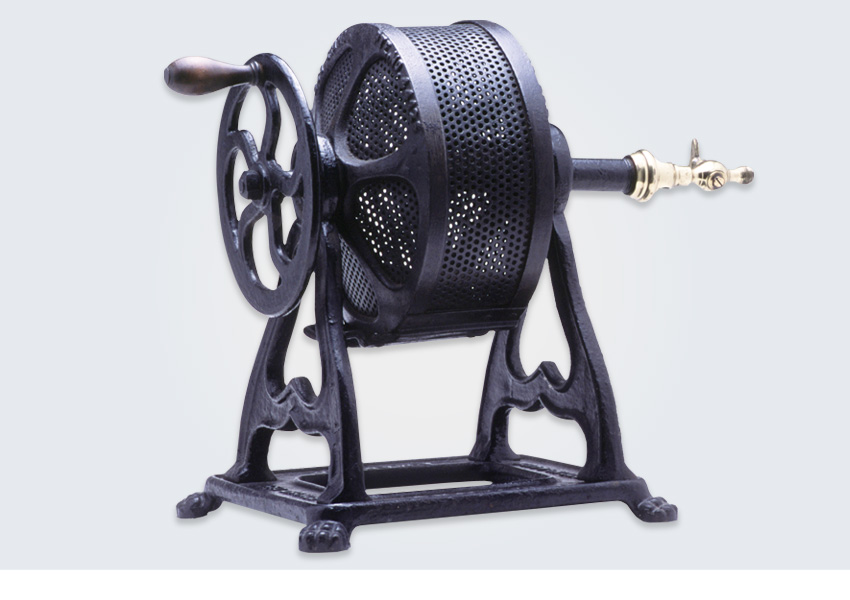 Find out more
Find out moreToday, it is great that just one electrical appliance provides us with the utmost versatility, but years before these were not frequent and many pieces of equipment with just one specific function were used.
- Model 88 “Art Nouveau” radiator
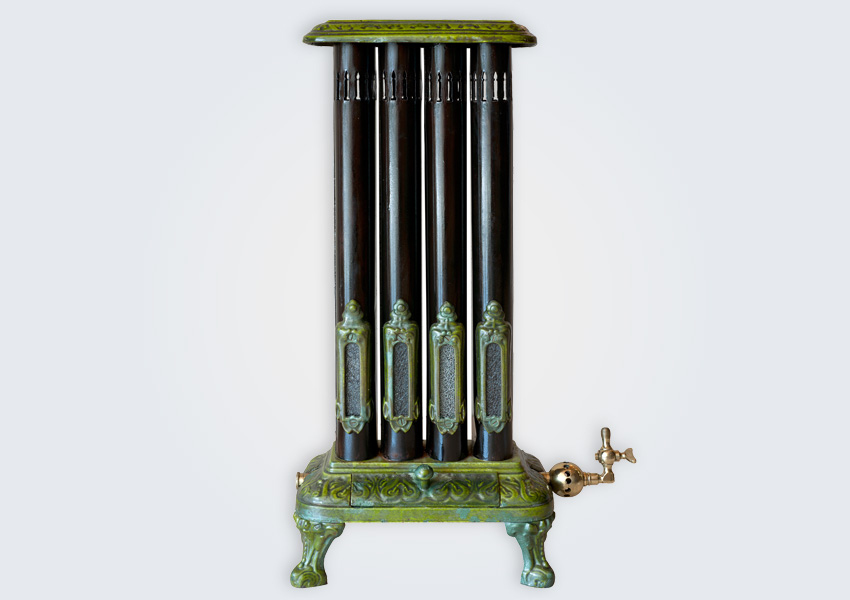 Find out more
Find out moreWe present a radiator from the collection. This is a unique and very beautiful model that appeared in the 1905 catalogue of Garnier & Cie de Lyon under the name “Radiateur ‘Art Noveau’”.
- The Bray lamppost
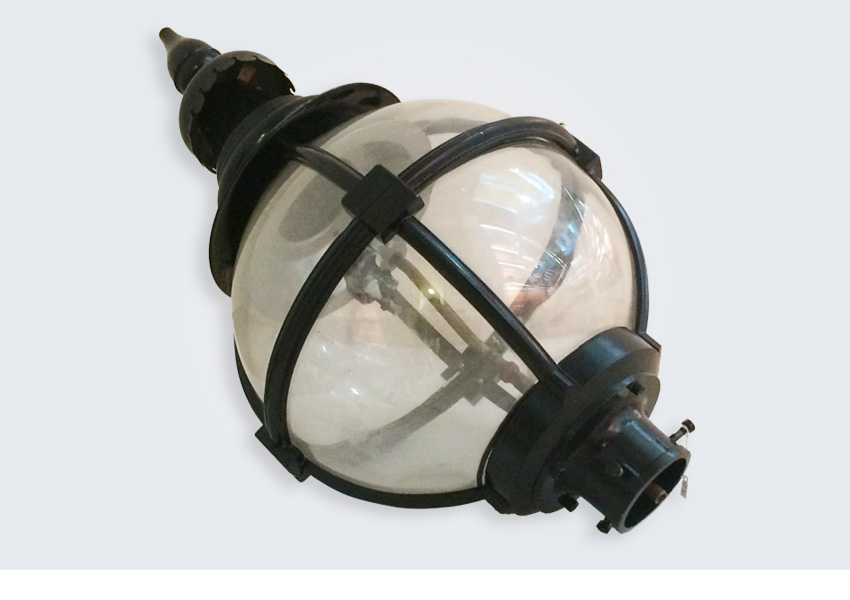 Find out more
Find out moreThis lamppost is unique in the world of lampposts. For many this is a rarity because they are unaware that these used to be used around the country. They illuminated public spaces in various European and North American cities.
- Gas iron
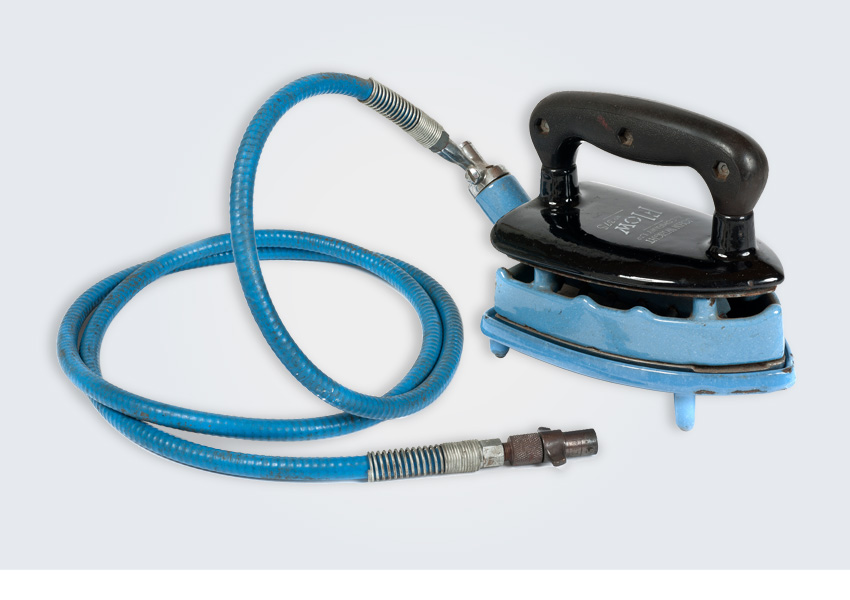 Find out more
Find out moreThe Gas Museum collection treasures a large number of irons, but the one we present today is the only one that still has the tube connecting it to the gas network, so it is a very special item.
- Gas meter
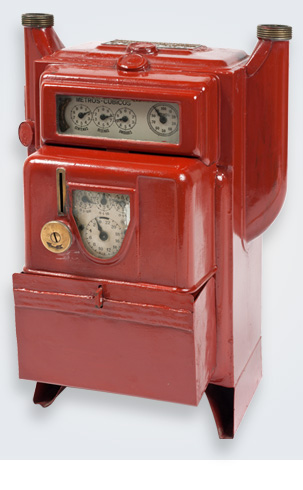 Find out more
Find out moreThis is an example of a paid gas meter from the early 20th century. You can find this gas meter in the cabinet of floor -1 at the Gas Natural Fenosa Foundation Gas Museum, where it is permanently exhibited.
- Gas fan
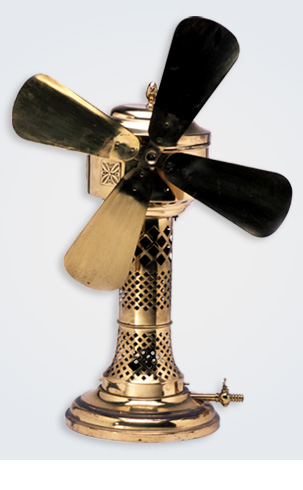 Find out more
Find out moreThis model was not marketed and sold, but it was presented to the company in the early 20th century by an engineering student. It originates from the Egyptians and Ancients Greeks as an object with a palmette shape.
- Torre de las Aguas model
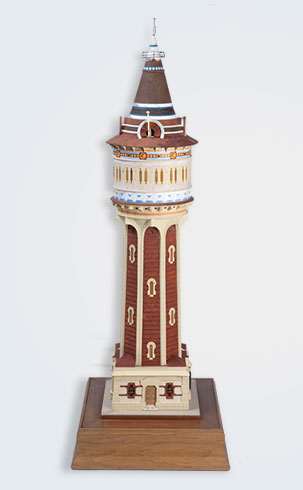 Find out more
Find out moreThis model replicates one of the most iconic Gas Natural Fenosa buildings. It was constructed by Jordi Miñana, a worker for the company and typesetter by profession. It was handed over in April 1993.
- Astra Calculator
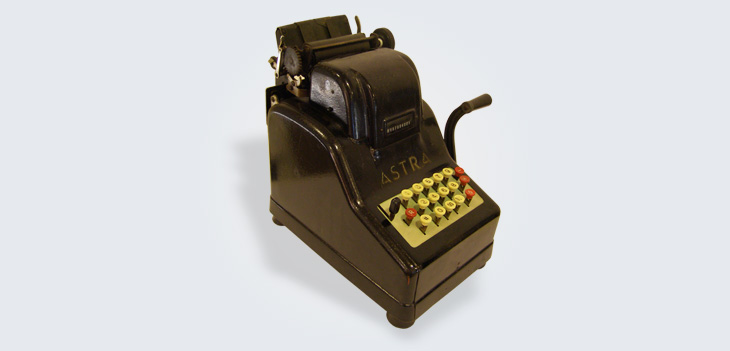 Find out more
Find out moreThis object, despite appearing to be obsolete today, was a revolution for calculators in its day. It is a manually adapted calculator, the centre is made from iron and the shell from black Bakelite.
- Table lamp
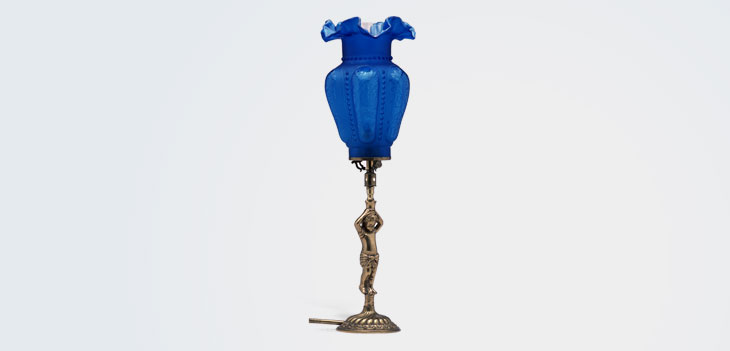 Find out more
Find out moreThis is undoubtedly an item with two functions. It is a gas table lamp that, as well as providing light, is an exceptional artistic piece that decorates any environment.
- Enamelled steel double stoves
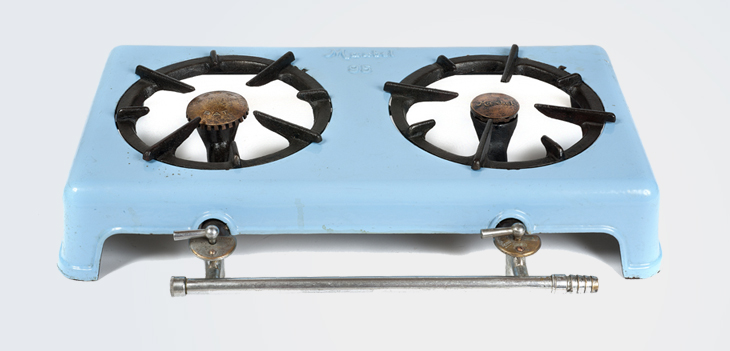 Find out more
Find out moreThis is one of the first double stoves on the market. It is a cooker with circular hobs. The burner is simple in the shape of a pipe and has two keys for the gas.
- Industrial coffee machine, bain-marie
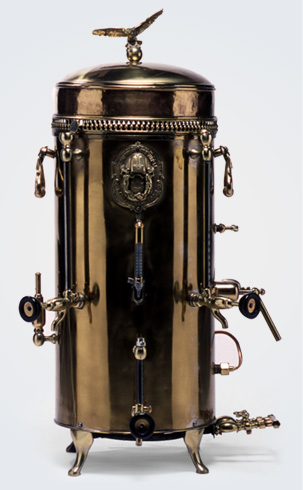 Find out more
Find out moreThis item fulfilled its function of keeping coffee warm. It dates back to around 1900 and could have been found in a cafe like the 4 Gatos in Paris or Barcelona.